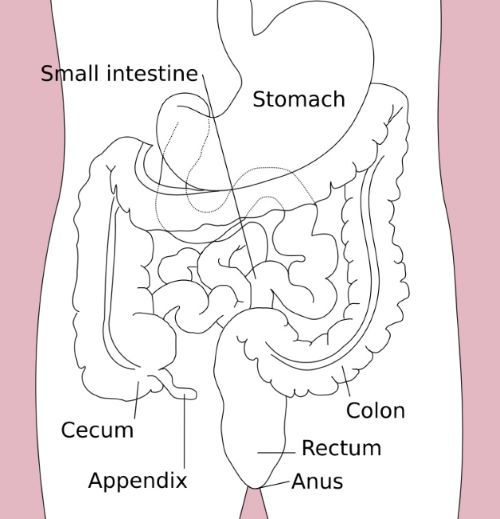Acetate in Nature: Vital Functions & Health
- Sylvia Rose

- Feb 11
- 4 min read
Updated: Feb 12
Acetate is a short chain fatty acid produced by microbes. In natural processes and biological functions, acetate has many tasks in environment, health and everyday life.

About Acetate
Acetate is the salt or ester derived from acetic acid, marked by the presence of the acetate ion. It's a precursor for the body's synthesis of biomolecules such as amino acids and fatty acids.
Fatty acids are created by bacterial species like those of the Lactobacillaceae, Ruminococcaceae and Lachnospiraceae families. Lactobacillus is a well known lactic acid bacteria genus.

Acetate is an anion or negatively charged ion. It's stable, and readily forms salts with positively charged ions like sodium (sodium acetate) or potassium (potassium acetate).
Following absorption, sodium acetate generates sodium bicarbonate, thereby raising blood and urine pH. Potassium acetate is used to treat low potassium levels and their effects such as poor electrolyte functions.

Acetate & Acetic Acid in Nature
Acetic acid (CH₃COOH) and acetate (CH₃COO⁻) are intimately related. Acetic acid is a weak acid, meaning it can donate a proton (H⁺) to form its conjugate base, acetate.
The relationship between the two is governed by pH. In acidic conditions, acetic acid predominates, while in basic conditions, acetate is the more prevalent form. Interconversion between acetic acid and acetate contributes to many chemical and biological processes.
In biological systems, maintaining a balance between acetic acid and acetate helps pH regulation and metabolic function. In the human body, a balanced ratio of acetic acid to acetate helps maintain blood pH, crucial for homeostasis or internal body balance.

Properties of Acetate
Solubility: Acetate salts are highly soluble in water, making them readily available for biological processes. Acetate flows through biological systems and the environment.
Biodegradability: Acetate is easily biodegraded by various microorganisms.
pH Buffer: The pH level of an acetate solution is usually around neutral (7). Many organisms need stable pH levels for optimal functioning. Acetate can evaporate without breaking down at standard temperature ranges.
Reducing Agent: Acetate is a reducing agent in some chemical reactions.

Acetate in Nature & Health
Microbes use acetate for energy production and biosynthesis. Many bacteria can use acetate as their primary carbon source, fueling their growth and reproduction.
It's produced in aerobic and anaerobic environments. When bacteria decompose plant materials, they convert up to 40% of carbon into acetate.
Natural processes, like decay of plants and animals, contribute to acetate presence across terrestrial and aquatic ecosystems. In living organisms acetate is generated during breakdown of fat, proteins and carbohydrates.

Anaerobic microbes prosper in oxygen-deprived environments like the digestive tract or in sediments. They use anaerobic fermentation to decompose organic matter like sugar compounds.
Aerobic bacteria are oxygen lovers. They create acetate in low oxygen as a byproduct of their metabolic processes.
In aquatic systems, acetate is necessary to carbon cycling. Microorganisms produce and consume acetate. For many bacteria, acetate is a metabolic intermediate and source of carbon and energy.

In soil, acetate facilitates microbial reduction of organic matter and nutrient availability for plants. When matter decomposes, the acetate stimulates activity of soil microbes. These enrich the soil with nutrients.
Acetate also contributes to the breakdown of organic matter and the cycling of carbon. In can be a signaling molecule, influencing behavior and interactions of microbial populations.
As a product of fatty acid oxidation, acetate can be transformed into usable energy. In humans, acetate transforms to the molecule acetyl-CoA in the Krebs cycle (or citric acid cycle) to create ATP energy in cells.

Biosynthesis: Acetate contributes to biosynthesis of essential molecules such as fatty acids, including short chain fatty acids like butyrate; amino acids and cholesterol. These support such functions as cell structure and hormone production.
Digestive Health: Acetate produced by GI bacteria helps maintain digestive health. It's a primary energy source for colonocytes, the cells lining the colon. It contributes to production of other short-chain fatty acids (SCFAs) like butyrate.

Facts about Acetate in Nature
Vinegar: Vinegar is a dilute solution of acetic acid, typically around 5-8%. Acetate gives vinegar its characteristic sour taste and its pickling and preserving properties.
Cryoprotectant Properties: Acetate solutions protect cells and tissues from damage during freezing.
Nutritional Influence: Acetate affects appetite regulation and energy metabolism. Acetate can stimulate hormone GLP-1, considered to control hunger and increase feelings of fullness.
Acetate also has many industrial uses.

Non-Fiction Books:
Fiction Books:
READ: Lora Ley Adventures - Germanic Mythology Fiction Series
READ: Reiker For Hire - Victorian Detective Murder Mysteries


